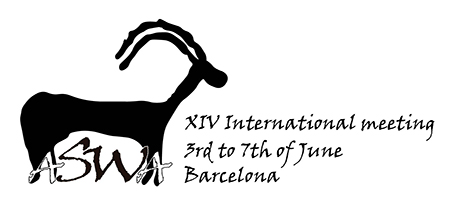The first evidence of pig domestication appeared ~8.500 BC in Southwest Asia, and the long history of pig domestication in the region has been the subject of growing attention. An increasing number of studies are using morphometrics and especially geometric morphometrics to explore the differences between wild and domestic populations or to track temporal and/or geographic variation of the domestic pig stock. Here we analysed the chrono-cultural and geographic variation of ancient pig remains corresponding to ~500 archaeological teeth (upper and lower second and third molar) recovered at ~30 sites dating from the early Neolithic to the Roman period and located in modern-day Turkey, Syria, Iran, and northern Iraq. We used 2 dimensional geometric morphometrics approach to explore subtle variation within and between sites in order to better understand the long-term relationships between human and pigs in Southwest Asia.
|
|
|
By author > Cucchi Thomas
Tracking long-term human and pig relationship in Southwest Asia using geometric morphometrics
1 : Institut des Sciences de l'Évolution de Montpellier
Université de Montpellier, Institut de recherche pour le développement [IRD] : UR226, Centre National de la Recherche Scientifique : UMR5554, École Pratique des Hautes Études [EPHE]
2 : Christian-Albrechts Universität zu Kiel
3 : Universitat Autònoma de Barcelona
(UAB)
-
Website
Departament de Prehistòria. Universitat Autònoma de Barcelona 08193 Bellaterra. -
Spain
4 : UMR 7209 - Archéozoologie et Archéobotanique
-
Website
Museum National d'Histoire Naturelle - MNHN (FRANCE), Centre National de la Recherche Scientifique - CNRS
57, rue Cuvier - 75231 Paris -
France
5 : Laboratori d'Arqueozoologia, Autonomous University of Barcelona
Departament de Prehistòria, Edifici B Facultat Filosofia i Lletres, Autonomous University of Barcelona, 08193, Catalonia, Spain. -
Spain
6 : Centre National de Recherche Scientifique, CNRS
CNRS : UMR7209
7 : SNSB, State collection of Anthropology and Palaeoanatomy
D-80333 Munich -
Germany
8 : Department of Veterinary Sciences, Institute of Palaeoanatomy, Domestication Research and the History of Veterinary Medicine, LMU Munich
Kaulbachstr. 37/III, D-80539 Munich -
Germany
9 : Archéozoologie, archéobotanique : sociétés, pratiques et environnements
(AASPE)
Museum National d'Histoire Naturelle, Centre National de la Recherche Scientifique : UMR7209
Muséum national d\'Histoire naturelle - Case postale 56 - 55 rue Buffon - 75005 Paris -
France
10 : Palaeogenomics & Bio-Archaeology Research Network, University of Oxford
11 : University of Aberdeen
* : Corresponding author
| Online user: 1 | RSS Feed |

|

 PDF version
PDF version